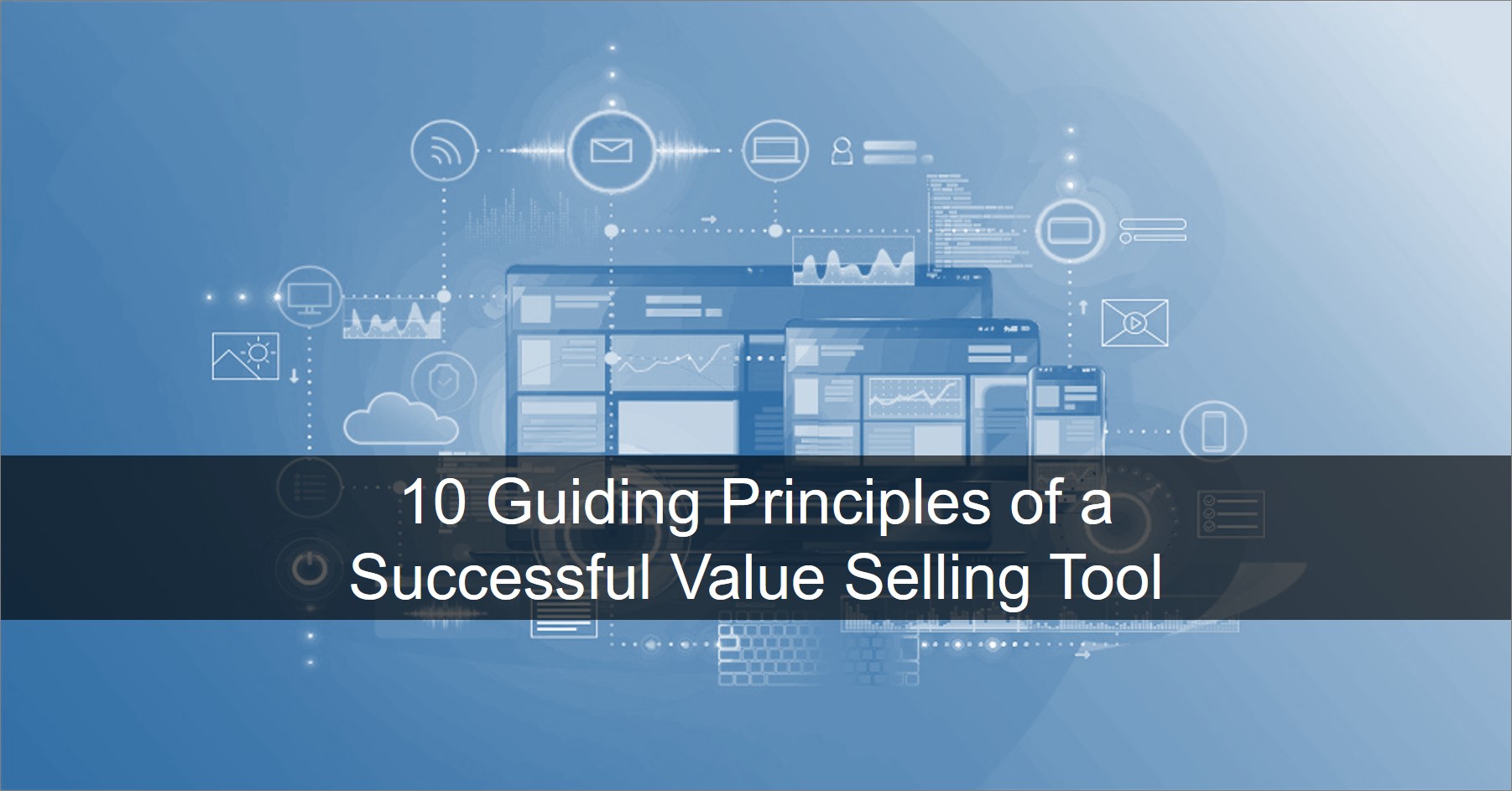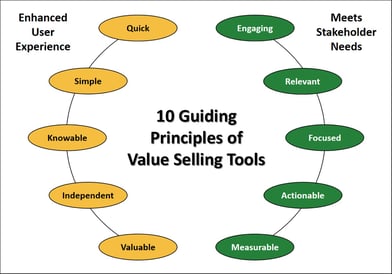
With value selling tools, sellers can develop a more persuasive business case with insights into customer problems. And buyers can justify investing in a solution whose value is expressed in dollars and cents. In our experience, successful value selling tools adhere to ten core principles.
Because different types of tools serve different purposes, each must be built thoughtfully and carefully. A well-designed value selling tool is easy to use, provides meaningful output to your customers, and delivers value to your organization.
Creating a Positive User Experience
It’s essential that populating your value selling tools is quick and simple. If a buyer can’t complete the process in one sitting, they simply won’t do it. Depending on the tool and the complexity of the solution, a session length of 5-10 minutes is ideal with a maximum of 20 minutes.
 The language used in the tool should be familiar to the buyer with questions focused on buyer problems and not the solution itself.
The language used in the tool should be familiar to the buyer with questions focused on buyer problems and not the solution itself.
The information requested must be knowable and readily available. You don’t want buyers interrupting the flow to research a particular data point. A helpful, well-designed tool should always provide pre-populated values to at least get the buyer in the right ballpark.
There may be times early in the buyer's journey when it’s appropriate for a sales rep to lead a discussion around a value selling tool but for the most part, buyers prefer a self-guided experience that allows independent action. The data (and output) may be deemed more trustworthy without external input from sellers or consultants.
After investing their time in using the tool, the results must be immediate, accurate, and valuable. Buyers should walk away from the experience with clear financial justification that can be shared with other stakeholders. Ideally, the summary report provides a clear path for moving the buying decision forward.
Satisfying Internal Stakeholders
A complete set of value selling tools encompasses the buyer’s entire journey, from problem identification to a purchase decision. When our clients come to us with ideas for a value selling program, we strategize with them to understand their objectives. We then provide recommendations for meeting internal stakeholder needs and identify which types of value selling tools will be most effective.
- Assessment tools help buyers realize the scope and magnitude of their problems.
- Value calculators give buyers an easy way to quantify a solution’s value.
- TCO tools provide a simple way to show the costs and benefits of one solution versus a competitor’s solution.
- ROI tools use the buyer’s own data and the solution’s total cost to illustrate an offering’s net value in simple financial terms.
Regardless of which type of value selling tool is deployed, the ultimate goal is to streamline and accelerate the sales process by engaging the buyer’s active participation. The tools fit seamlessly into different phases of the buyer’s journey and provide relevant information that furthers the sales conversation. Note that individual tools should be focused and configured around a narrow set of buyer problems and solutions to ensure simplicity and ease of use.
Value selling tools that are actionable clearly identify the buyer’s next steps and get you closer to increasing sales. For example, assessment tools and value calculators should encourage buyers to share their contact information in exchange for a summary report. Likewise, TCO and ROI tools should provide buyers with a business case that’s strong enough to encourage them to buy from you.
The performance of your value selling tools should be measurable so you can tweak and promote their usage accordingly. Self-service tools should be integrated with web analytics and marketing automation platforms to quantify engagement and the number of leads. Another best practice is to integrate sales-led tools with CRM platforms to measure usage and win rates.
Conclusion
Well-designed value selling tools can improve your marketing and sales performance. Following these ten guiding principles ensures you offer buyers a good experience while also meeting the needs of your internal stakeholders.
-------------------------------------------------------------------------------------------------------------------------------
Resources
Connect with David Svigel on LinkedIn.
Join the Value Selling for B2B Marketing and Sales Leaders LinkedIn Group.
Visit the ROI Selling Resource Center.









